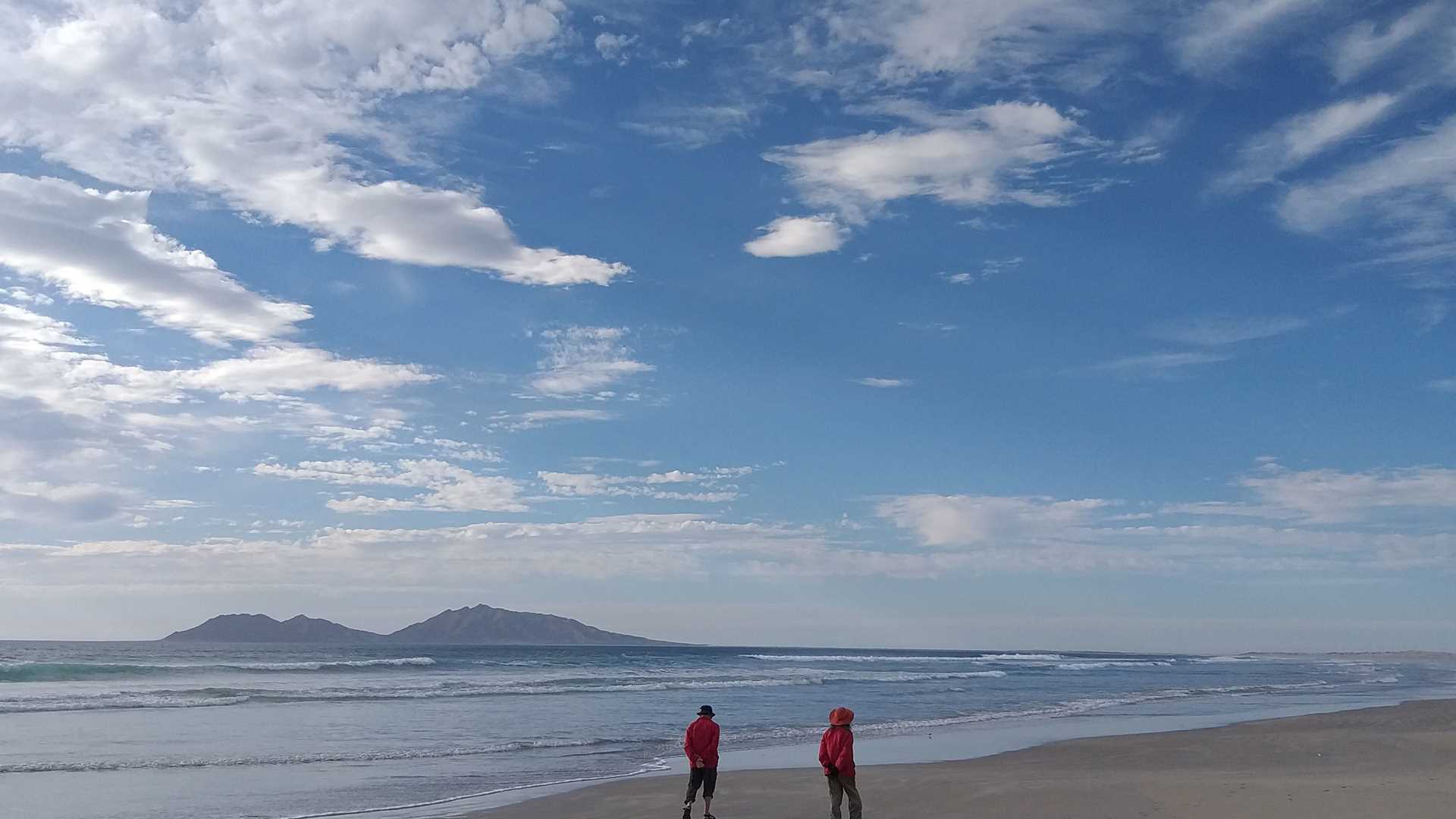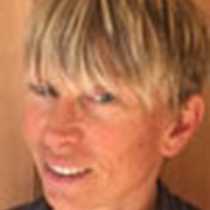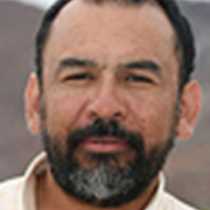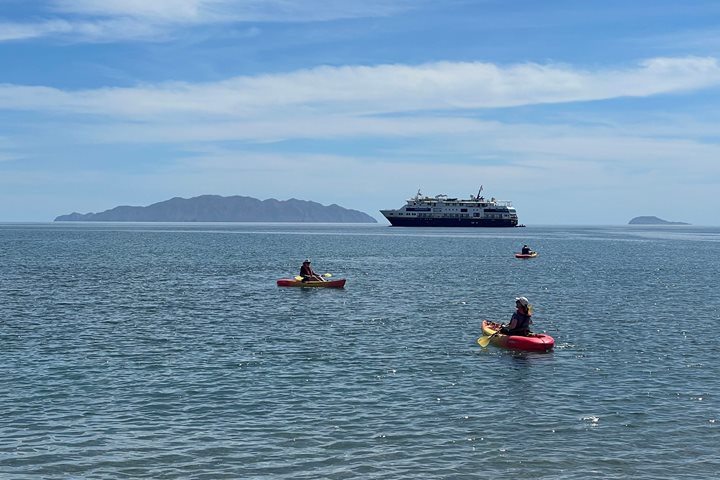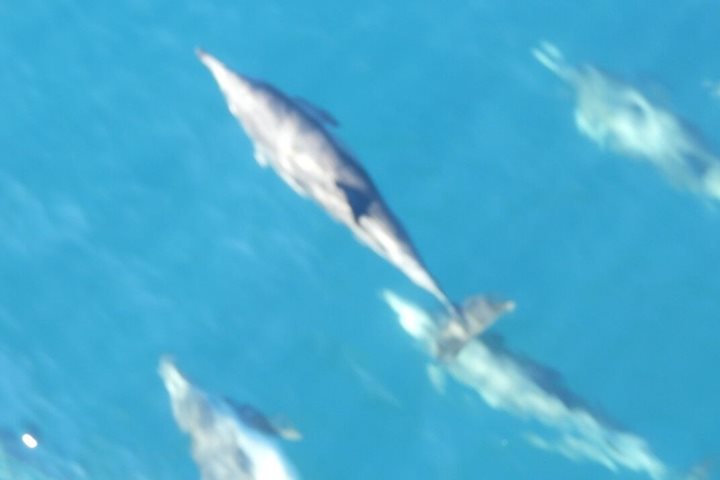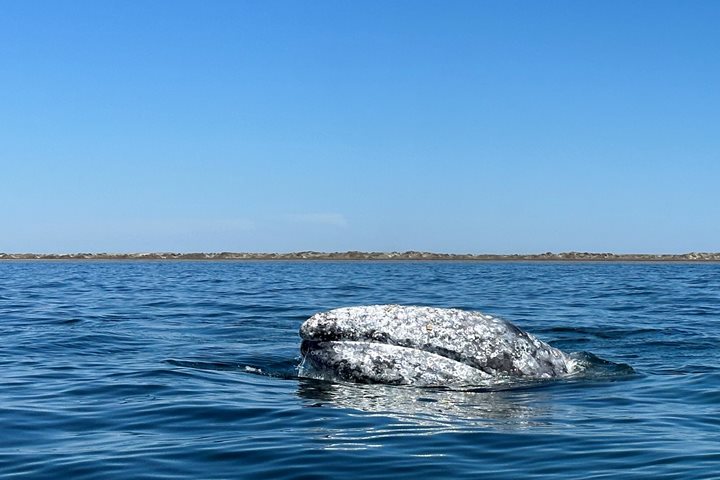Today we repeated a session of whale watching in the quiet waters of the Magdalena Bay, but a bit earlier. Around 7 a.m. we boarded a big local panga, moving into the Boca de la Soledad, a shallow entrance for the cetaceans located between Magdalena and Santo Domingo islands. There was a light, warm breeze blowing from the northwest, but the conditions were perfect for more whale observations, like a clear atmosphere and a motionless sea. Once at the Boca, we saw the whales moving slowly, almost lazily, with no hurry—the mothers nursing the babies or playing with them; the singles seeking for mates. Our excited guests captured the last mental and photographic images of these magnificent giants, as we would leave soon the area.
The naturalists said the last words about their reproduction, population biology, behavior, history—all that they have been able to learn about the species, not only from specialized books but also, and more importantly, by their years of experience visiting them in the nurseries. Additionally, dozens of seabirds decorated the scenery: white pelicans (“borregones” in the local Spanish jargon), terns, gulls, frigatebirds, pelicans, and fishes jumping out of the water! Once we were more than satisfied with the whale watching, National Geographic Sea Bird picked up anchor (and our navigational adviser Sergio as well) and sailed back into the Canal de la Soledad. The ship passed by Adolfo López Mateos port, which was ready to celebrate, today and the following two days, the Gray Whale Festival, a local tradition in which the people (all the town!) congregate to elect a Queen of the Gray Whale. This Queen, for a year, will promote the conservation of the whales and the tourist activities, local cuisine and traditions of the place.
During the transit of the Canal de la Magdalena, Hiroshi Kawashima presented “The Other Mexico,” a great overview of the discovery, exploration, colonization, and modern life of the peninsula of Baja California, the gulf, and islands. Some whale sightings also occurred from the bow, and, again, we contemplated the dense patches of mangroves with their feathery inhabitants—cormorants, godwits, willets, and others, while 13 dolphins rode our bow.
In the late afternoon, the ship reached the southern portion of the canal, and dropped anchor. All our guests and staff went ashore the Pacific side—the Santa Maria Bay and Sand Dollar Beach. Hundreds of shells were there awaiting us—to be picked, observed, and photographed, like the tower, fig and moon snails, tivelas, cockles, scallops, pen shells, and more. Minute sandpipers pecked at the wet sand to get small invertebrates, their food. Our expedition finished with a beautiful sunset that painted the sky in pink, red, orange, and green.

